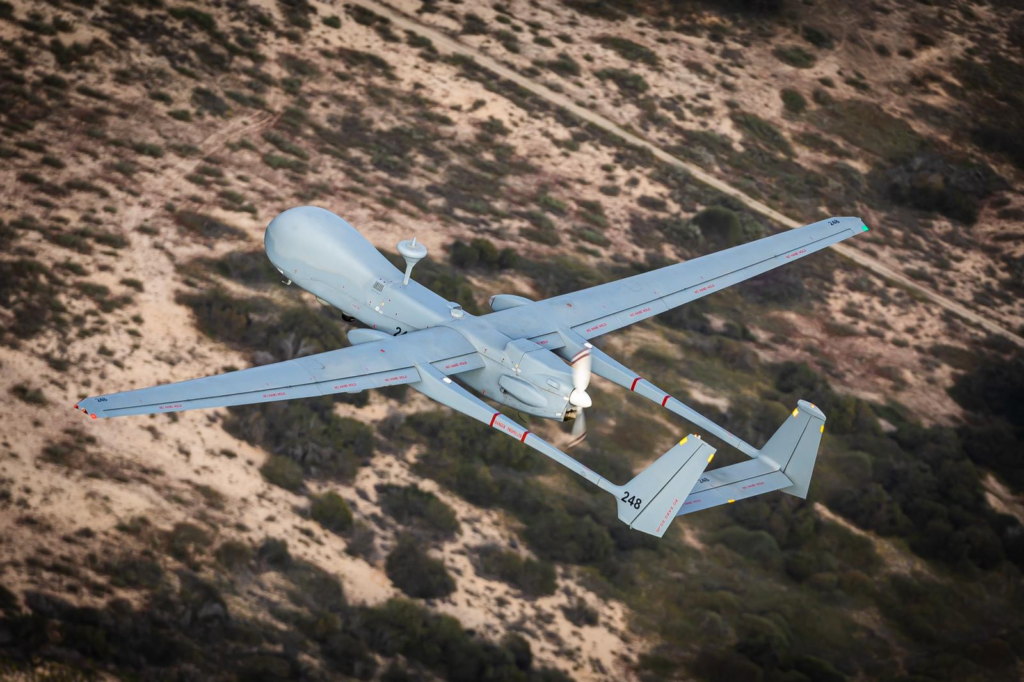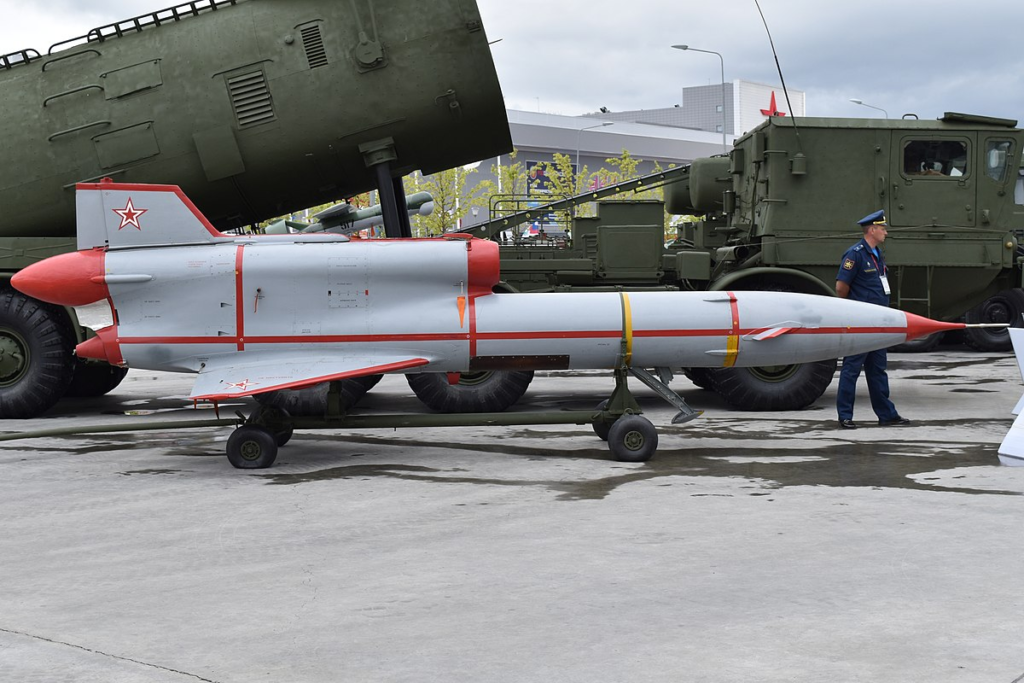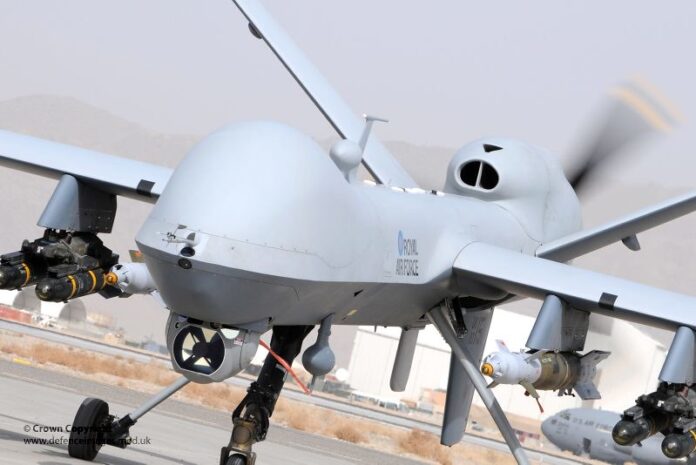About a month after the deadly Twin Towers attack in the USA, the silent skies of Kandahar, Afghanistan – the epicentre of Taliban power, roared with the sound of an unmanned aircraft on October 7, 2001. It was an MQ-1 Predator armed with anti-tank missiles; and the first night of the US military intervention, then called “Operation Enduring Freedom”. The first drone strike was piloted by the U.S. Air Force operators directed by CIA analysts.
There had never been a lethal strike carried out by a remotely piloted aircraft before, and the operational protocols for the Predator were both undefined and untested. The use of drones by the United States has surged significantly since the 9/11 terrorist attacks. This is when drones became more common knowledge in everyday talks; not just in conflict zones but thousands of miles away too.
These military drones, known as UAVs (Unmanned Aerial Vehicles), have become indispensable tools in contemporary conflicts, blending cutting-edge technology with strategic finesse. No longer the stuff of futuristic imagination, these unmanned planes are rewriting military playbooks and reshaping the global landscape of defence.
So, what is drone technology, and why is it capturing so much attention? These marvels are far more than remote-controlled gadgets; they are the epitome of innovation, delivering surveillance, reconnaissance, and combat capabilities—all while keeping soldiers out of harm’s way. Let’s find out how these technological wonders are taking warfare to new heights.
Why Are Drones Used in the Military?
The appeal of UAVs in military strategy goes beyond their technological allure. They bring unique advantages that have made them indispensable, like human safety, cost efficiency, and stealth missions.
Removing human pilots from hostile environments significantly reduces the risk of casualties. Even though the usage of any aircraft manned or unmanned is mission specific, human safety has come a long way with drones since the Imperial Japanese forces conducting Kamikaze attacks. This is particularly crucial for missions in high-conflict zones or contested airspace. Certain UAVs can remain airborne longer than traditional aircraft, sometimes even for days, providing round-the-clock surveillance. This endurance enables comprehensive monitoring of vast areas without interruption.
Practically too, drones are generally cheaper to produce and operate than conventional jets. Their lower maintenance costs and lack of life-support systems contribute to significant savings. Silent and virtually invisible to radar, drones excel in covert operations. Their ability to blend into the environment makes them ideal for reconnaissance and targeted strikes.
From reconnaissance to precision strikes, UAVs adapt to a wide array of tasks. Drones have revolutionized warfare by addressing long-standing limitations of manned operations. Consider the MQ-9 Reaper, an iconic unmanned plane equipped for both intelligence gathering and combat. Capable of carrying multiple precision-guided weapons and staying airborne for up to 27 hours, it embodies the versatility of UAVs. On surveillance missions, it collects real-time data, offering commanders unmatched situational awareness. For combat, the Reaper neutralizes threats with surgical precision, minimizing collateral damage—a critical consideration in modern warfare.
Drones extend the operational reach of militaries. Traditional aircraft require refuelling stops, but drones equipped with fuel-efficient engines or hybrid systems can cover thousands of miles uninterrupted. This endurance allows them to monitor expansive areas, such as ocean borders or remote mountainous regions, where constant vigilance is essential. UAVs also thrive in high-risk scenarios. When tasked with entering enemy airspace, their stealth capabilities and remote operation eliminate the dangers to human pilots, enabling nations to achieve objectives without risking lives.
Beyond these tangible benefits, drones offer unmatched flexibility. Military surveillance drones, like the Global Hawk, focus on reconnaissance, while others are designed for combat, electronic warfare, or even humanitarian aid. This adaptability ensures that UAVs meet a wide range of operational demands, making them indispensable assets for modern militaries.

Image Credit: Baiweiflight
How Military Drones Work
Behind the sleek, unassuming exteriors of military drones lies a complex web of advanced engineering. Designed to operate independently or via remote control, these UAVs are a symphony of high-tech components:
Built from lightweight, durable materials, the airframe ensures agility and stealth. Its aerodynamic design minimizes drag, enabling long-range operations. GPS-based navigation keeps these drones on course even in contested environments. Some advanced systems even include inertial navigation, ensuring accuracy if GPS signals are jammed.
Military surveillance drones rely on sophisticated imaging systems—infrared, thermal, and radar—to gather actionable intelligence. These sensors can operate day or night, through clouds or smoke. Operated from ground stations or pre-programmed for autonomous missions, UAVs maintain a secure communication link with operators. Advanced encryption ensures commands cannot be intercepted or tampered with.
Many modern drones use AI to process data in real time, enabling them to recognize targets, avoid obstacles, and adapt to changing conditions without human intervention.
Imagine a military surveillance drone patrolling a contested border. Ground operators use advanced software to guide it, while its onboard sensors relay real-time data, identifying threats or illegal movements. Its quiet propulsion and stealthy design allow it to operate undetected, providing invaluable intelligence without endangering human lives. This cohesive integration of cutting-edge technology makes military drones an essential asset on the modern battlefield.

Image Credit: IDF Spokesperson’s Unit
How Are Military Drones Powered?
The secret to a drone’s endurance lies in its power systems, tailored for efficiency and reliability. The propulsion technologies used in military drones vary depending on their size, mission, and operational requirements:
Many drones use compact, fuel-efficient engines to support their long-range missions. These engines are particularly effective for larger UAVs, providing the perfect balance of power, endurance, and operational efficiency. Unlike traditional aircraft, these engines are designed to maximize time in the air while minimizing fuel consumption, enabling missions that span thousands of miles without interruption. This capability is essential for surveillance drones monitoring vast terrains or tracking targets over extended periods.
For smaller, tactical UAVs, lightweight electric motors are the power source of choice. These motors are quiet, reliable, and require less maintenance than combustion engines. Their low heat signature makes them exceptionally hard to detect with infrared sensors, a vital feature for stealth operations. These electric-powered UAVs excel in missions requiring discretion, such as intelligence gathering in hostile territories. Moreover, advancements in battery technology are steadily increasing the flight duration of electric drones, making them more versatile than ever.
A hybrid approach, combining combustion engines and electric motors, is also gaining popularity. These systems offer the best of both worlds: long-range capabilities for extended operations and quiet, low-profile performance when stealth is critical. This flexibility allows drones to adapt to dynamic mission requirements, making them invaluable for modern militaries.
Pioneering the next frontier, experimental drones are now exploring solar power as a sustainable energy source. Equipped with advanced photovoltaic cells, some solar-powered UAVs can remain airborne for weeks or even months. These drones are particularly suited for high-altitude, long-endurance missions, such as persistent surveillance or atmospheric monitoring. The potential of solar technology in military applications could redefine the limits of drone operations, opening new possibilities for energy-efficient, ultra-long-range missions. As power systems evolve, drones are poised to become even more integral to military strategy.
The Global Hawk, a high-altitude surveillance drone, exemplifies innovation in propulsion. Powered by a jet engine, it can cover vast distances without refueling, making it invaluable for intelligence operations across continents. Its power system allows it to remain airborne for over 32 hours, enabling continuous monitoring of critical areas.
Power systems also determine a drone’s operational altitude and speed. High-efficiency engines and lightweight materials enable military drones to reach altitudes exceeding 60,000 feet, well above the range of most air defense systems. This combination of advanced propulsion and innovative design ensures that military drones remain at the forefront of modern warfare.

Image Credit: Alan Wilson
What is Drone Technology?
Drone technology represents the fusion of robotics, aeronautics, and sophisticated communication systems, creating a versatile platform for various applications. In military settings, this is further enhanced to meet the demanding needs of modern warfare. Military drones are engineered for precision, resilience, and adaptability. This is what makes them indispensable tools in strategic operations.
Advanced artificial intelligence enables these drones to perform autonomous decision-making. Integration of such technologies allows them to navigate, identify targets, and execute missions with minimal human intervention. Secure data link systems ensure seamless and encrypted communication, that subsequently safeguards critical information even in hostile environments. Cutting-edge materials enhance their stealth capabilities, ensuring they can operate undetected while maintaining durability under extreme conditions.
This blend of innovative technologies has transformed drones into highly efficient assets for reconnaissance, surveillance, and combat. They represent a paradigm shift in military tactics, offering cost-effective, precise, and reliable alternatives to traditional methods. Beyond their military applications, drone technology’s principles are paving the way for advancements in various sectors, including disaster management, logistics, and environmental monitoring. The continuous evolution of drone capabilities highlights their growing importance in reshaping how we approach challenges across industries and domains.

Image Credit: Boevaya Mashina
Military Drones in Action
UAVs demonstrate their versatility across a range of critical missions. In counter-terrorism and humanitarian efforts, they excel in surveillance, providing real-time intelligence to monitor enemy activity and secure borders. They enable precision strikes in combat, which directly translates into reduced collateral damage, and play a vital role in search and rescue, locating individuals in disaster zones or hostile areas. UAVs are important in electronic warfare, to disrupt enemy communication and radar systems. These capabilities underline their growing significance in addressing diverse challenges with efficiency and precision.
The Future of Military Drones
The evolution of UAVs promises even more transformative capabilities. Innovations on the horizon are inclusive of ridiculously real swarm technology – a coordinated fleets of drones working in unison for greater impact.
The impact of AI on UAVs is also on the cards with smarter drones capable of real-time decision-making without human input. On the other hand, like military jets, researchers are also working on designs that render UAVs virtually undetectable, i.e., enhanced stealth.
As drone technology matures, these advancements will integrate UAVs into the fabric of military operations.
Military drones have proven themselves to become more beyond just tools, as strategic assets shaping the future of warfare. From military surveillance drones gathering intelligence to armed UAVs executing precision strikes, these unmanned aircraft symbolize a new era in defense. With innovation driving their capabilities, drones are proving that in modern warfare, the sky’s no longer the limit—it’s just the beginning.



